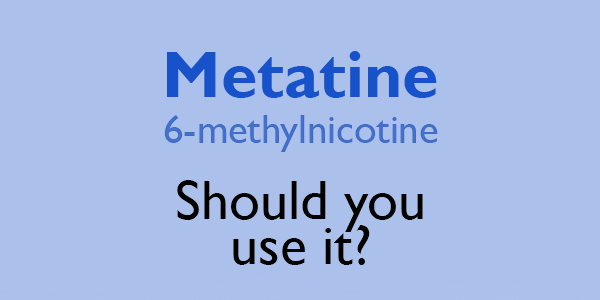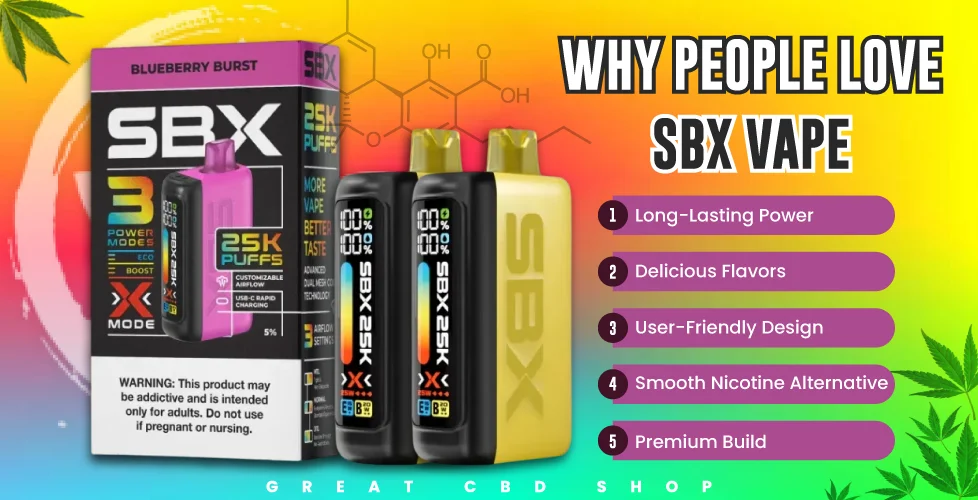Flavored, Nicotine-Free SBX Vapes: The New Frontier for Vape Vending
By combining SBX’s innovative Metatine™ formulation with VTM’s smart vending infrastructure, entrepreneurs can capitalize on a profitable, future-proof business model that aligns with evolving public health priorities. Based on the regulatory analysis and the table provided, Metatine™-based zero-nicotine SBX disposable vapor products are currently subject to state PMTA Directory Laws in a limited number of jurisdictions. Specifically, these requirements apply in Oklahoma and Louisiana under current law, and will take effect in Utah on January 1, 2025, Iowa on February 3, 2025, Wisconsin on July 1, 2025, and Kentucky on January 1, 2025. These six states either already enforce or are preparing to enforce PMTA directory regulations that require vapor products to be listed or certified before sale.
While these laws are designed to apply to products that contain nicotine and are therefore subject to FDA premarket tobacco application (PMTA) requirements, the opinion provided by Keller and Heckman LLP notes that the SBX products—being zero-nicotine and not tobacco-derived—do not meet the definition of a tobacco product under the Federal Food, Drug, and Cosmetic Act. However, until state regulators clarify whether these directory laws exclude non-nicotine products, it is recommended that SBX devices not be marketed in these six states to avoid regulatory uncertainty.
In contrast, the remaining states listed—Illinois, Alabama, Virginia, Nebraska, North Carolina, and Florida—do not currently impose PMTA directory requirements applicable to zero-nicotine vapor products. North Carolina’s law, which becomes effective on May 1, 2025, and Florida’s “reverse directory” system both apply exclusively to nicotine-containing products. As such, Metatine™-based zero-nicotine SBX vapor products are not affected by these measures.
Overall, with the exception of the six identified states, Metatine™-based zero-nicotine SBX disposable vapor products may be lawfully distributed in all other states without PMTA directory listing obligations, provided they continue to meet federal and state definitions distinguishing them from tobacco or nicotine products.
Across the U.S., new state and federal regulations have increasingly targeted nicotine-based and tobacco-derived vape products, leading to major gaps in the retail market. However, this shift has also opened the door for innovation—specifically, the rise of flavored, non-nicotine vapor alternatives. Among the most prominent of these is the Metatine™-based SBX formulation—a next-generation vapor base that allows for flavor delivery without the inclusion of nicotine or tobacco-derived compounds. For vending operators, distributors, and retailers, this creates an unprecedented window of opportunity.
Compliance Review: SBX Vapes and State Regulations
Key Points:
6-methylnicotine (6-MN) is a nicotine analogue used in some “nicotine-free” vapes (e.g., SBX). At the federal level, current FDA tobacco authority explicitly covers “nicotine from any source,” but not separate analogue molecules; FDA has publicly flagged potency and youth-risk concerns and is reviewing options.
State treatment hinges on how “vapor/tobacco products” and “flavored” are defined. Some states tie flavor bans to nicotine (creating a potential gap for 6-MN); others regulate flavored vapor broadly, regardless of nicotine content.
- New York State: DOH field communication (Dec 23, 2024) circulated to local health departments indicated flavored vapes with non-nicotine ingredients such as 6-MN are not prohibited by the state’s Article 13-F flavor ban; SEE NY HEALTH DEPARMENT DOCUMENT HERE New York City’s separate law still bans all flavored e-cigs except tobacco-lavor/unflavored.1,11,12
- California (effective 2025): AB 3218/SB 1230 expand state definitions to include nicotine analogs, closing this loophole for 6-MN products.5,8
- New Jersey: State law bans sale of any flavored “vapor product” and defines it to include substances aerosolized “regardless of whether the substance contains nicotine.”15
Early toxicology/health literature and agency statements suggest some nicotine analogs (including 6-MN) may be more potent than nicotine; research base is still limited and evolving.
SBX Vapes (Metatine/ 6-Methylnicotine): Laws, Loopholes, Research, and the Future of Vape Vending:
SBX is a line of disposable vaping devices that contain no traditional nicotine. Instead, they use a novel nicotine analog called 6-methylnicotine, marketed under the proprietary name Metatine™. SBX vapes are designed to provide a “traditional” vaping sensation – including flavored vapor and a nicotine-like buzz – without using any tobacco-derived or synthetic nicotine. Because SBX’s active ingredient is not actually nicotine, the product exploits a regulatory loophole: SBX devices are not currently classified as nicotine-containing tobacco products under certain laws. In practical terms, SBX has been advertised as “PMTA-exempt” (exempt from FDA premarket tobacco authorization) because it does not fall under U.S. FDA tobacco regulations for nicotine. This has made SBX and similar “nicotine-free” vapes attractive to manufacturers and consumers in jurisdictions where flavored nicotine e-cigarettes are banned.
What is 6-Methylnicotine (Metatine)?
6-Methylnicotine (6-MN) is a synthetic analog of nicotine – essentially a nicotine molecule modified by adding a methyl group. Despite this small chemical tweak, 6-MN mimics nicotine’s effects on the body. Like nicotine, it binds to the same brain receptors and produces a comparable “buzz” and pleasurable sensation, and is believed to be similarly addictive.

In fact, early research indicates 6-methylnicotine’s potency may be greater than nicotine’s: in animal studies, 6-MN was several times more potent at causing nicotine-like effects. This means a smaller dose of 6-MN could have equal or greater addictive and physiological impact compared to a given dose of nicotine. The trademark owner of Metatine has acknowledged that “Metatine produces the same sensation as nicotine and may also be addictive,” even while emphasizing that it is not derived from tobacco or nicotine.
Chemists classify 6-MN as one of several possible “methyl nicotines,” compounds where a methyl group is attached to nicotine’s molecular structure. The (S)-enantiomer of 6-methylnicotine (the form used in SBX/Metatine) is the most pharmacologically active, similar to (S)-nicotine in tobacco.
6-MN was originally studied decades ago – tobacco industry scientists in the 1970s synthesized nicotine analogs like 6-MN anticipating future nicotine regulations – but those early studies were shelved for fear of attracting regulatory scrutiny. Only recently, after the U.S. cracked down on synthetic nicotine in 2022, has 6-methylnicotine been resurrected as an alternative stimulant for vaping products.
Federal Regulatory Loophole (FDA and Nicotine Analogues)
Under U.S. law, the FDA’s Center for Tobacco Products gained authority in April 2022 to regulate nicotine in vaping products regardless of its source (natural or synthetic). However, this authority extends only to the nicotine molecule itself, not to chemical analogues that are similar but not identical. Because 6-methylnicotine is not exactly nicotine, products like SBX currently fall outside FDA’s tobacco product jurisdiction. In other words, an e-cigarette containing Metatine (6-MN) is not legally considered a “tobacco product” under the U.S. Tobacco Control Act’s definitions.
Manufacturers do not need to obtain FDA premarket authorization (PMTA) for these products at this time. SBX vapes have been marketed as “PMTA-exempt” and sold openly despite the flavor restrictions and required FDA approvals that halted many nicotine-based vapes. Regulators are aware of this loophole and its growing exploitation. In May 2024, a Reuters investigation highlighted that several “nicotine-free” vapes using analogs (like 6-MN) were being launched in the U.S. and abroad, specifically to evade existing vape rules.
 The FDA acknowledged that “emerging data show these nicotine analogs may be more potent than nicotine – which is already highly addictive”, and stated it was reviewing its authority and potential actions regarding such compounds. Even a major tobacco company, Altria, sent a letter to FDA in 2024 warning that nicotine-mimicking chemicals like 6-MN pose a “new threat” to regulation and urging the FDA to clarify its authority over them. As of late 2025, however, no specific FDA rule or guidance has yet closed the gap.
The FDA acknowledged that “emerging data show these nicotine analogs may be more potent than nicotine – which is already highly addictive”, and stated it was reviewing its authority and potential actions regarding such compounds. Even a major tobacco company, Altria, sent a letter to FDA in 2024 warning that nicotine-mimicking chemicals like 6-MN pose a “new threat” to regulation and urging the FDA to clarify its authority over them. As of late 2025, however, no specific FDA rule or guidance has yet closed the gap.
New York State Flavor Ban – SBX Deemed Legal
New York State provides a clear example of how SBX’s zero-nicotine formulation sidesteps flavor bans. In 2020, New York passed a ban on flavored vaping products as part of Public Health Law Article 13-F. Crucially, New York’s definition of a “flavored vapor product” is limited to any e-liquid or device “intended or reasonably expected to be used with or for the consumption of nicotine.” SBX devices contain no nicotine and are not intended for use with added nicotine, so by definition they fall outside of New York’s flavor ban.
In late 2024, New York authorities explicitly affirmed this interpretation. On December 23, 2024, the New York State Department of Health (NYSDOH) issued a field memorandum to all local health departments confirming that vaping products containing non-nicotine ingredients like 6-methylnicotine are NOT prohibited by Article 13-F’s flavor ban. This memo effectively declared that SBX flavored vapes (which use Metatine in place of nicotine) are legal to sell in New York State under current law.
The NYSDOH emphasized that since SBX is a closed, non-refillable system with zero nicotine, it is not “intended or expected” to be used for nicotine consumption, and thus “is not subject to the flavored vapor product ban in New York State.”
 But: SBX cannot be sold within New York City. NYC has its own local law banning flavored e-cigarettes, which does not hinge on nicotine content. NYC law flatly restricts retailers to only sell e-cigarettes or e-liquids that are tobacco-flavored or unflavored – all other flavors are illegal. The NYSDOH memo explicitly noted that SBX sales “are not permitted in New York City.”
But: SBX cannot be sold within New York City. NYC has its own local law banning flavored e-cigarettes, which does not hinge on nicotine content. NYC law flatly restricts retailers to only sell e-cigarettes or e-liquids that are tobacco-flavored or unflavored – all other flavors are illegal. The NYSDOH memo explicitly noted that SBX sales “are not permitted in New York City.”
Mississippi ENDS Registry Law Does Not Apply to SBX Metatine Products
Key Point: Charlie’s Holdings, Inc.’s SBX (Metatine) vapor products are not subject to Mississippi’s new Electronic Nicotine Delivery System (ENDS) product registry law, which takes effect July 1, 2025.
The Mississippi ENDS law only applies to products that contain nicotine or are “suitable for use with nicotine.” Metatine (s-6-methylnicotine salt blend) is not nicotine under federal law (21 U.S.C § 387(12)) and contains no tobacco-derived ingredients. Therefore, SBX (Metatine) products are outside the scope of Mississippi’s ENDS registry and do not need to be listed to be sold legally in the state.
The timeline for Mississippi’s ENDS law begins July 1, 2025, when the registry takes effect. The list of legal ENDS products is expected to be published on October 1, 2025, with enforcement provisions becoming operational on December 1, 2025. Since SBX does not contain nicotine, it is unaffected by these requirements. Mississippi’s ENDS registry law only governs nicotine products, so SBX (Metatine) flavored disposables remain legal in Mississippi without registry listing.
Kentucky
Charlie’s Holdings, Inc.’s zero-nicotine Metatine vapor products, including SBX and Spree Bar closed-system devices and Pachamama e-liquids, are lawful to sell in Kentucky and are not subject to the state’s PMTA certification law. Kentucky defines “vapor products” broadly, meaning Metatine products do fall under the state’s excise tax for vapor devices, but because they contain no nicotine or tobacco, they are not covered by the certification requirements that apply only to “nicotine vapor products.”

In short, SBX and other Metatine products are exempt from Kentucky’s PMTA certification requirements but remain taxable as vapor products. Nicotine-based vapes, whether tobacco-derived or synthetic, face stricter compliance obligations in the state.
Other State-by-State Rulings and Laws
- New Jersey: NJ’s flavor ban prohibits sale of any flavored “vapor product,” defining it broadly to include any substance aerosolized “regardless of whether the substance contains nicotine.” This covers SBX directly.
- California: Initially had a loophole, but AB 3218 and SB 1230 (effective Jan 1, 2025) expand definitions to include nicotine analogs. This closes the gap, banning flavored 6-MN products and requiring authorization even for unflavored versions.
- Massachusetts: Its 2019 law targeted “electronic nicotine delivery systems.” Since SBX contains no nicotine, it arguably falls outside the law—but regulators could interpret it as covered. Currently a legal grey area.
- Rhode Island: State law (2025) bans flavored “electronic nicotine-delivery products.” While wording centers on nicotine, regulators may treat 6-MN products as within scope. Risk of enforcement is high.
Health and Research Considerations
Research on 6-MN is limited but raises red flags. Early findings suggest it may be more addictive than nicotine. Toxicologists warn that users could overdose more easily. Some studies show increased inflammation and neurological effects in animals compared to nicotine. Long-term safety studies are lacking, and regulators remain concerned about misleading “nicotine-free” marketing to youth.

Conclusion
SBX disposable vapes with Metatine (6-methylnicotine) represent a new frontier in vaping. By exploiting a regulatory loophole, they’ve carved out legal markets in states like New York (outside NYC), while being explicitly banned in others (NJ, CA). Policymakers are moving quickly to close gaps, and health experts warn that “nicotine-free” does not mean risk-free. For now, SBX remains both a business opportunity and a regulatory flashpoint.
SBX Vapes Q&A (Metatine, Compliance, Pricing, Flavors)
What is SBX Vapes?
What is Metatine in SBX Vapes?
Is Metatine safe to use?
Is SBX approved by the FDA?
Is SBX legal to sell in the United States?
How much does SBX cost?
What flavors does SBX offer?
Who makes SBX Vapes?
Can SBX be sold through vending machines?
What is the bottom line on SBX and Metatine?
SBX Vape: The Next Generation of Disposable Vaping
-
What is SBX Vape?
SBX Vape is one of the most innovative disposable vape brands on the market. Unlike traditional vapes that rely on nicotine, SBX introduces Metatine, a nicotine alternative designed to mimic the satisfaction of a standard throat hit while staying outside certain legal restrictions. This unique formula allows SBX devices to stand out from other disposables.
-
SBX Vape Review: Performance Meets Flavor
In any SBX vape review, users highlight two standout qualities: performance and taste. The SBX 25K disposable offers up to 25,000 puffs, multiple power modes, and an advanced digital display. Pair that with bold, long-lasting SBX vape flavors, and it’s clear why reviewers are calling this device a “game changer.”
-
SBX Vape Flavors That Stand Out
A huge part of the SBX experience is the wide selection of flavors. From Blue Razz Ice to Virginia Tobacco, each SBX vape flavor is crafted for boldness and smooth delivery. Vapers who enjoy fruit, menthol, or even classic tobacco profiles can find their go-to option within the SBX lineup.
-
SBX 25K Disposable Vape: Built to Last
The SBX 25K disposable vape redefines what “disposable” means. With 20ml of e-liquid and a rechargeable 1000mAh battery, it outperforms most competitors in longevity. The ability to deliver up to 25,000 puffs per device makes it one of the longest-lasting disposables available.
-
SBX Metatine Vape: A Legal Alternative
The SBX Metatine vape is marketed as a nicotine-free option thanks to its use of Metatine. Because it’s not legally classified as nicotine in many jurisdictions, SBX products may avoid some of the restrictions placed on flavored e-cigarettes. This legal loophole is one reason SBX has gained rapid popularity.
-
SBX Vape Rechargeable Convenience
One of the frustrations with most disposables is running out of battery before finishing the e-liquid. The SBX vape rechargeable design solves this problem. Using USB-C fast charging, users can recharge the device multiple times until the full 20ml is consumed.
-
SBX Vape vs Juul: Why SBX Wins
When comparing SBX vape vs Juul, the differences are clear. Juul offers a much smaller puff count and limited flavor selection. Meanwhile, SBX provides more customization with airflow options, power modes, and up to 25,000 puffs, giving users far more value.
-
SBX Vape Wholesale Opportunities
Retailers are increasingly looking into SBX vape wholesale because of the strong demand. With its long-lasting design and diverse flavors, SBX appeals to a wide market. Shops that stock SBX products often benefit from repeat customers and high profit margins.
-
SBX Vape Price and Value
When customers compare the SBX vape price to its performance, they see strong value. At around $19.99 per device, the puff-per-dollar ratio is far better than most disposables. Fewer replacements mean more savings in the long run.
-
SBX Vape Buy Online
Many vapers prefer to buy SBX vape online for convenience. Authorized retailers like Great CBD Shop and Element Vape carry authentic SBX products, making it easy for customers to find the latest flavors and models.
-
SBX Zero Nicotine Vape Advantage
For health-conscious vapers, the SBX zero nicotine vape is attractive. While still delivering a familiar buzz through Metatine, it avoids traditional nicotine and may help users transition away from addictive habits.
-
SBX Vape Legal Status
The legal status of SBX vapes varies by state. Some states treat Metatine like nicotine, while others allow it to bypass flavor bans. For example, New York State considers SBX legal (except in NYC), while California closed the loophole in 2025.
-
SBX Vape Battery Life
The SBX vape battery life is another key selling point. With a 1000mAh rechargeable battery, the device lasts long enough to handle the massive 25,000-puff capacity without frequent charging.
-
SBX Vape Dual Mesh Coil Technology
Flavor and vapor production are enhanced by the SBX vape dual mesh coil. Dual coils heat the e-liquid evenly, producing smoother clouds and preventing burnt hits that often plague cheaper disposables.
-
SBX Vape Airflow Control
Adjustable airflow is rare in disposables, but SBX includes it. With SBX vape airflow control, users can switch between MTL (Mouth-to-Lung), DTL (Direct-to-Lung), or balanced settings to match their style.
-
SBX Vape Troubleshooting Tips
If issues arise, SBX vape troubleshooting is simple. Check the battery charge, clean the mouthpiece, or switch airflow settings. Because the device uses a digital display, users can easily monitor e-liquid levels and battery life.
-
Best SBX Vape Flavor Options
Choosing the best SBX vape flavor depends on preference. Fans of fruit usually go for Strawberry Kiwi or Blueberry Burst, while menthol lovers prefer Mystic Ice or Grape Ice. For those who want something classic, Virginia Tobacco is a top choice.
-
SBX Vape vs Other Disposables
When analyzing SBX vape vs other disposables, the advantages are clear: higher puff count, rechargeable battery, advanced display, and Metatine formula. Few brands offer this level of innovation in a disposable.
-
SBX Vape Pros and Cons
Every device has strengths and weaknesses. The pros of SBX vapes include long puff count, rechargeable design, bold flavors, and customizable settings. The main con is that availability varies by state due to shifting regulations.
-
SBX Vape Sale and Coupon Deals
Vapers looking to save can find SBX vape sale and coupon deals online. Retailers often run promotions on bulk purchases or new flavor launches, making it easier to stock up at discounted prices.
References / Works Cited
- New York State Department of Health. Field memorandum re: flavored vaping products containing non-nicotine ingredients (Dec 23, 2024).
- European Journal of Pharmacology (2025). Emerging nicotine analog 6-methyl nicotine increases reactive oxygen species.
- The Lancet Respiratory Medicine (2025). The rise of nicotine analogues in vaping products.
- New Jersey Division of Consumer Affairs. Press release on flavored e-cigarette enforcement (Jan 2025).
- California Department of Public Health. California Flavored Tobacco Sales Law 2025 (AB 3218/SB 1230).
- Metatine official site. Regulatory Status.
- Reuters (2024). FDA says nicotine analogs may be more potent than nicotine.
- American Lung Association et al. Letter to FDA Commissioner urging regulation of nicotine analogs (May 2024).
- Archives of Toxicology (2025). Comparative toxicological evaluation of emerging nicotine analogs.
- Tobacco Prevention & Cessation (2024). Introduction of nicotine analogue products in US/EU.



1 comment
While I opposed what you do, I must commend you for presenting the facts about 6-MN in an unbiased way. I have not seen any other vape-selling website with as much information as you present.
Matthew P. May
Principal Scientist
Eurofins PSS